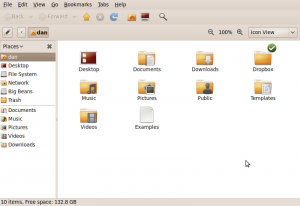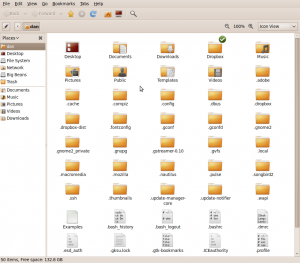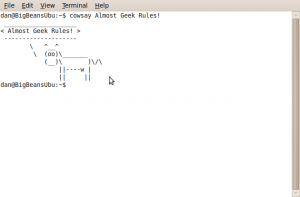Filezilla is my FTP client of choice. It is a free and open source FTP client that works on Windows, Linux and Mac it can be downloaded from here. Filezilla has many features, one of the nicest features is called “Site Manager” where it saves the server information along with your user name and password so that you can connect to it quickly. If your a webmaster with many websites and random passwords this is a definite time saver. If you are like me and a lot of other webmasters you have a regular computer and a laptop for the road. The tutorial will show you how to setup all your FTP accounts in Filezilla on one computer then copy the settings over to your other computer(s) so that you don’t have to reenter your details again.
Filezilla’s site explorer settings resides in your appdata folder on Windows, a hidden directory within your home directory on Linux, and your user’s library folder on OS X. This posts assumes your copying from settings Windows to another Windows machine as that’s what most people use. I will show you where the folder in on Ubuntu and OS X the file is the same on all platforms and can be copied between systems without issue.
UPDATE Sept 2016:
Starting a couple versions ago I noticed import/export functionality in Filezilla. Simply go to File > Export and select what you would like to export. The most important is the Site Manager entries. On the target computer simply do File > Import. You may get a warning stating the the export was created using a newer version of Filezilla (especially going from Windows to Ubuntu), from what I can tell it’s safe to ignore this warning. The rest of the article tutorial still works too.
First things first, Open Filezilla and click open the Site Manager. Site manager is the leftmost icon, I’ve highlighted it in the screenshot below.
This is the Site Manager. Click “New Site”, name it and put in your host, select “Logontype” normal from the drop down and input your user name and password. Repeat for the rest of your sites. Connect to each account to make sure it works then close Filezilla.
Now Windows navigate to your appdata folder. For instructions on how find your app data folder click here (new window). This is your app data folder, open the Filezilla folder.
This is your Filezilla’s app data folder. Now you want to copy the sitemanager file to a thumb drive or perhaps email it to yourself. Keep this file secure! The passwords are stored in plain text anyone can open the file in any text editor and view all your account information. As of a few versions ago Filezilla hashes passwords. Alternatively you can copy the whole Filezilla folder to your thumb drive to save all the program’s settings.
Now you have the file and can place it in Filezilla’s app data folder on another Windows machine. Be sure to install and run Filezilla first on the second machine so that it create the Filezilla folder under appdata. Alternatively you can install Filezilla and don’t run it then if you copied the whole folder just drag and drop it to appdata.
Bingo! Your done. 🙂
Other operating systems:
Ubuntu:
UPDATE Sept 2016:
Starting with Ubuntu 16.04 it appears Filezilla’s settings are now stored in ~/.config/filezilla. All other directions remain the same.
You can install Filezilla by running ‘sudo apt-get install filezilla’ without the quotes from terminal or clicking here on your Ubuntu system.
In Ubuntu Filezilla’s settings are stored in ~/.filezilla. This is a hidden folder (click to learn how to show hidden files in Ubuntu) in your home directory. If you copied the whole folder just drag the folder off your thumb drive to your home folder and rename it to .filezilla then launch Filezilla and all your sites will be there. If you just copied the sitemanger.xml file. First launch Filezilla by going to Applications > Internet > Filezilla then close it. We launched it just to create the configuration folder. Copy sitemanager.xml to ~/.filezilla and relaunch all your sites will be there.

Mac OS X:
Show hidden files by following this tutorial then copy sitemanager.xml to .filezilla in your home directory. Alternatively you can copy the Window’s folder from your thumb drive and rename it to .filezilla then drop it into your home folder.

If you have any questions leave them in the comments please.
Edit 1/13: Here is a great post for learning how to sync your Filezilla profile across multiple computers: http://www.code-zen.net/2009/syncing-filezilla-sites-across-computers-with-dropbox






